Borealis Maritime has acquired the 39,905gt/2013 built and 3,400 TEU capacity sisterships Nordic Beijing and Nordic Hong Kong from Nordic Hamburg Shipping.
CMA CGM has selected Wärtsilä Ballast Water Management Systems (BWMS) for its four new 3,300 TEU container vessels currently under construction. The BWMS system chosen for these vessels is a 500m3 per hour capacity Wärtsilä Aquarius UV system. It uses a simple two-stage process involving filtration and ultra-violet (UV) irradiation. The containerships are being built at the Cosco Zhoushan shipyard in China. Delivery of the equipment to the yard is scheduled to begin in July 2017.
On 1st February Total, the world’s fourth-ranked international oil and gas company, and CMA CGM signed a three-year memorandum of understanding in preparation for stricter fuel regulations in the shipping industry and to further reduce the sector’s footprint by developing solutions that make container ships ever more environmentally- friendly. Total will support CMA CGM by becoming its multi fuel supplier, providing a comprehensive range of solutions as follows: Fuel oil with a sulfur content of 0.5%; Fuel oil with a sulphur content of 3.5% for ships equipped with exhaust gas cleaning systems, or scrubbers, which reduce the polluting emissions before they are released into the atmosphere.
LNG, which offers numerous advantages from an environmental standpoint, including the reduction of CO2 emissions, the elimination of sulfur oxide (SOx) emissions, drastic decrease of nitrogen oxides (NOx) and particulate matters. Total Marine Fuels was also to be renamed Total Marine Fuels Global Solutions on 1st February 2017. The new organisation intends in particular to become a leading player in the LNG bunker market. Total is also very active in marine lubricants, which it markets under the Lubmarine brand.
On 2nd February the CMA CGM Group announced that from the first week of March 2017, its product offering on the Asia-West Africa market will be streamlined from 5 to 4 direct weekly services by adapting the service rotation of the 3 services WAX, WAX 3 and AFEX to West Africa Central Range for an optimised coverage and increased synergies as follows: WAX: Operated by CMA CGM with 12 vessels of 4,350 TEU, will discontinue South Africa and Nigeria calls. Instead, the service will add Abidjan Westbound to its current export call with an improved transit time up to 5 days. Abidjan from Shanghai will be reached in 37 days.
CMA CGM also made its first call to New Orleans on its PEX3 service in early February as part of the Asia-USA service. The New Orleans port call supplements the existing US Gulf calls at Houston and Mobile. From 20th February CMA CGM upgraded its Swahili Express service to twice weekly services with a combined fleet of 9 vessels up to 3,500 TEU with 12 ports of call. The service will be dedicated to the Kenya and Tanzania markets with very fast transit times. Mombasa will be reached from Mundra in 12 days and Dar es Salaam in 14 days. The changes began from the sailing of the 30,024gt/2001 built Chief at Nhava Sheva on 24th February. The Noura Express service will also have an improved transit time to Somalia by 4 days. Mogadishu port will be reached in 7 days from Jebel Ali and in 17 days from Mundra. The upgraded operation began with the sailing of the Keta on 20th February.
COSCO Shipping Holdings has revealed that it disposed of eight containerships with an aggregate tonnage of 409,914dwt over the fourth quarter of 2016. The vessels Luo Ba He (36,722gt/built 1998), 65,140gt/1997 built Jun He, Yue He, Cosco Qingdao, Wan He, Lu He and the 8,917gt/2001 built Cosco Ran and Cosco Sakura were sold off to different independent third-party buyers to be scrapped for a total net consideration of Yuan212m ($30.9m). The Cosco Ran and Cosco Sakura were owned by the group’s subsidiary, Cosco (Cayman) Mercury Co, while the other six vessels were owned by another division, Shanghai Pan Asia Shipping Company. The company had previously scrapped four vessels in April 2016, following the 14 ships dismantled in February and March 2016. The tonnage, totalling 216,900dwt, included two 1993-built container feeders, Xiu He and Ya He, two dry bulkers, the 1998-built capesize Tian Fu Hai and the 1967-built handysize Ming Hai.
Eimskip has confirmed an order for a pair of 2,150-TEU capacity ice-class container vessels from China Shipbuilding Trading Company and Guangzhou Wenchong Shipyard at a price of $64m in total.
The contract is subject to financing and Eimskip is working on securing the funding of the vessels.
The newbuildings, which will be designed in accordance with the Polar Code, are scheduled to be delivered in 2019. Eimskip also reached an agreement with Greenland government-owned Royal Arctic Line (RAL) by which the latter has also signed a contract with the Chinese shipyards to build one vessel of the same type. Both China Shipbuilding Trading Company and Guangzhou Wenchong Shipyard are subsidiaries of China State Shipbuilding Corp. (CSSC). The trio of 180m long/31m beam vessels will have an ice class, will be designed in accordance with the Polar Code and will have a TIER III engine to lower NOx emissions as well as a SOX scrubber. Eimskip has been an agent for Royal Arctic Line since 1993 when the latter was founded. In 2016, the co-operation was extended by appointing TVG-Zimsen, Eimskip’s subsidiary, a forwarder of air-freight and trucking for Royal Arctic Line in Europe.
Hamburg Süd offered its customers as of 2nd February a new service profile for the SAWC Service between South America West Coast, Central America, the Caribbean, and North Europe. The weekly connection offers various highlights including competitive transit times with improved lead time from South America into London, and a very competitive transit time into Rotterdam with 25 days from Valparaíso. From Europe, customers benefit from a direct service to the main South American west coast markets and to Hamburg Süd’s main transhipment hubs Cartagena, Caucedo, and Buenaventura. On 6th February Maersk Line and Hamburg Süd announced a slot purchase agreement for Hamburg Süd’s volumes on the East-West trades to be shipped on vessels in the 2M network. Due to changes in the global liner alliances, the agreement follows commercial negotiations in anticipation of the termination of Hamburg Süd’s current slot purchase arrangements on the East-West trades. In detail, Hamburg Süd will be able to offer its customers the following product portfolio and service frequencies: Asia-North Europe: 5 sailings per week/Asia-Western Mediterranean: 2 sailings per week/Asia-US West Coast: 4 sailings per week/Asia -US East Coast: 3 sailings per week and transatlantic: 2 sailings per week.
Hanjin Shipping looked set to be wiped from the shipping scene on or around 17th February. Seoul Central District Court will put the company out of its misery having gone into receivership six months earlier. The court granted a two-week period for appeals before declaring the company bankrupt, citing a greater value of the liquidation over Hanjin’s value as a going concern as the reason for its decision. The effect of Hanjin’s collapse on the industry has been so widespread and the concern of a potential recurrence so great that the South Korean government has announced it will pour $5.6bn into the country’s shipping industry. A containership owned by Ship Finance International became a casualty of the Hanjin Shipping saga in early February. The 16,803gt/2003 built and 1,728 TEU capacity SFL Europa was detained by the Chittagong Port Authority against debts owed by Hanjin Shipping, to whom the vessel was chartered. The High Court of Bangladesh in Dhaka issued an order that the vessel be released once the security had been put up by the ship’s owner (not Hanjin), but the port authority appealed that decision. SFI planned to fight the appeal, but while appeals can take a year in Bangladesh, they can also take up to 12 years! Another vessel on long-term charter to Japanese interests, the 16,472gt/2008-built and 1,805 TEU capacity Hanjin Ho Chi Minh, is also being held there since September.
Hapag-Lloyd named its latest vessel, the 118,945gt/10,500-TEU capacity Cartagena Express on 23rd January. The ceremony (above) took place at the Hyundai Samho Heavy Industries shipyard in Samho, South Korea. The Cartagena Express is the third ship in the post panamax series after the Valparaiso Express and the Callao Express and will rotate through Rotterdam, London, Hamburg, Antwerp, Le Havre, Caucedo, Cartagena, Manzanillo (Panama), Buenaventura, Callao, Puerto Angamos, Valparaiso, Callao, Buenaventura, Manzanillo (Panama), Cartagena, Caucedo and back to Rotterdam.
HDASCO Line, the Iranian national shipping company, planned to launch a new container shipping service between Le Havre and Iranian and Iraqi ports, commencing February 2017. The new service will call at the following ports: Bandar Abbas, Asaluyeh, Bandar Iman, Khomeini, Busher, Khorramshahr (Iran) and the port of Um Qasr (Iraq) as well as Malta, Khor Fakkam, Jebel Ali (UAE), Xingang (China), Busan (South Korea), Qingdao, Shanghai, Ningbo, Yantian (China) and Port Kelang (Malaysia).
Hyundai Merchant Marine (HMM) is set to receive around $644m in financial assistance from a vessel financing entity recently launched by the Korean government. The cash injection is part of the government’s comprehensive measures to give the domestic shipping and shipbuilding sectors a shot in the arm in light of Hanjin Shipping’s bankruptcy in 2016. HMM is expecting to utilise the funding to increase its fleet size and the number of terminals it operates as it assumes its position as Korea’s flagship carrier following Hanjin’s demise.

K Line’s 152,297gt/2015 built and 14,000 TEU capacity Manhattan Bridge (above) suffered a boiler room explosion as she approached Felixstowe on 19th January, killing one crewman and seriously injuring another. The ship’s next port of call was scheduled as Hamburg.
Maersk Line has acquired the 141,754gt/2013 built Hanjin Harmony (above). She was renamed Maersk Ensenada at Rotterdam during January 2017. The Danish company is the largest operator of former Hanjin Shipping vessels but more than two-thirds of the vessels from the bankrupt company’s fleet remain inactive. Of Hanjin’s fleet of 98 containerships, with a capacity of around 610,000 TEU when it filed for receivership on 31st August 2016, 31 ships have been redeployed by other lines and four have been scrapped. Other operators of former Hanjin tonnage include Yang Ming, Pacific International Lines, CMA CGM, X-Press Feeders and KMTC. However, some 63 vessels with 440,000 TEU of capacity remain idle from the defunct Hanjin fleet with buyers being sought.
On 2nd February the 141,716gt/2011 built and 13,100 TEU capacity Maersk Elba (above) became the largest ship to call in Israel on docking at Haifa Port’s Carmel Terminal. In early February Maersk Line decided to postpone the delivery of its nine 14,000 TEU vessels currently under construction, with delays between one month and one year. The ships will now be delivered by the end of 2018, not this year as planned. The decision was announced as part of the company’s financial report in which Maersk Line informed that it recorded a loss of $376 million in 2016 compared to a $1.3 billion profit in 2015.
Oldendorff Carriers has acquired a 180,000dwt Capesize newbuilding resale (Hull No. 131) from Jinhai Heavy Industry Co Ltd. The vessel was launched in summer 2016 and is expected to be delivered to Oldendorff Carriers in March or April 2017 as the William Oldendorff.
Rickmers Maritime has sent the 54,214gt/2004 built and 5,060 TEU capacity containership Kaethe C Rickmers (above) to shipbreakers in Bangladesh. The company said that it would incur a $31.6m impairment loss from the vessel sale that will be recognised in its fourth-quarter 2016 results. The sale was part of a memorandum of understanding signed with HSH Nordbank and DBS Bank, whose senior loan facilities to the trust were secured by the vessel. Rickmers Maritime will utilise the net proceeds from the sale to pay the operating expenses of other vessels secured under the HSH loan facility and to make partial repayments of the loans owed to the bank.
On 9th February came the news that Rickmers Maritime had been taken over by the Zeaborn Group, established in 2013. In addition to the business of Rickmers-Linie, Zeaborn has also taken over the business operations of MCC Marine Consulting & Contracting, which is active as bunker and chartering broker.
Samra Midas Group (SMG), which acquired Hanjin Shipping’s Asia-North America shipping route, has applied to the US Federal Maritime Commission (FMC) to start a new transpacific container service. Branded SM Line, it would begin operating in April, deploying a fleet of five 6,500-TEU vessels.
Seatrade is setting up a new regular intercontinental container service from New Zealand for which Zeebrugge is scheduled as the first European port. The new Meridian Service starts in New Zealand. Next on the route is South-America, with 2 port calls in Peru. The vessel then visits Philadelphia and sets sail for Zeebrugge. Seatrade has deployed the 24,905gt/2017 built Seatrade Blue for the first loop of this new service. All vessels sailing for this containerservice have a nominal capacity of 2,259 TEU and are provided with 700 reefer plugs. The Meridian Service will bring fruit and other (reefer) cargo to Zeebrugge. The first call is expected in March.
SM Line is proposing to operate a liner service between Shanghai and Ningbo in China, Busan in South Korea and Long Beach, USA. The company also intends to operate eight intra-Asia services between China, Japan, Thailand, Vietnam, India, Pakistan, Indonesia etc. SM Line was officially launched on 6th January, after the completion of its organisational structure at its headquarters in Yoido, Seoul. Later in January the 40,030gt/2009 built and 4,253 TEU capacity Hammonia Pescara (above) was acquired by fledging company SM Line.
Vineta’s 23,132gt/2001 built geared container ship Red Cedar (above) lost 15 containers during a storm in the North Sea near Texel, The Netherlands in January. The vessel was en route from Hamburg to Antwerp, but was caught by rough weather. The cargo manifest indicated that the units were loaded with non-hazardous goods. After the incident the salvage tug Guardian was sent to the scene whilst the Red Cedar continued on her way.

X-Press Feeders of Singapore is to start operating the three services acquired last year from Swedish shipping company Rederi TransAtlantic AB (RABT), a subsidiary of Viking Supply Ships, under its own brand name. The services including TransBothnia, TransFeeder North and TransFeeder South have been operating under the TransAtlantic container brand since the acquisition. A total of five ships with a capacity ranging from 700 TEU to 1,000 TEU are deployed on the services, which are centred on the German ports of Hamburg and Bremenhaven and serve Denmark, Sweden and Finland.

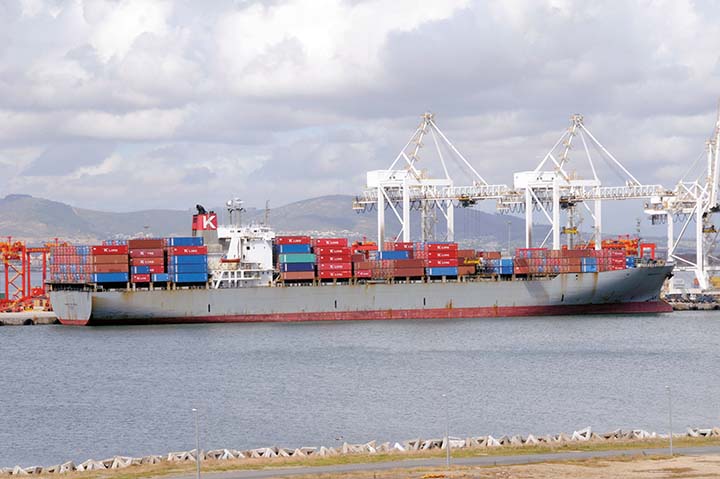

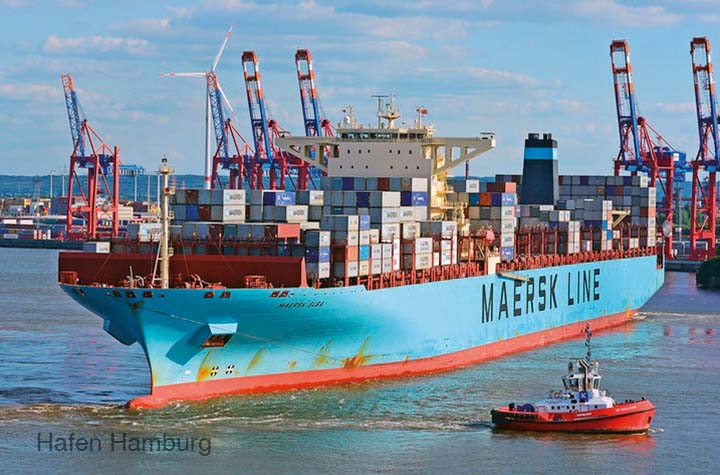
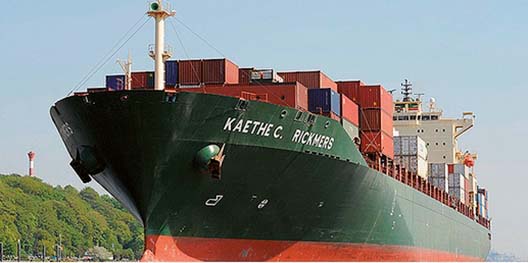
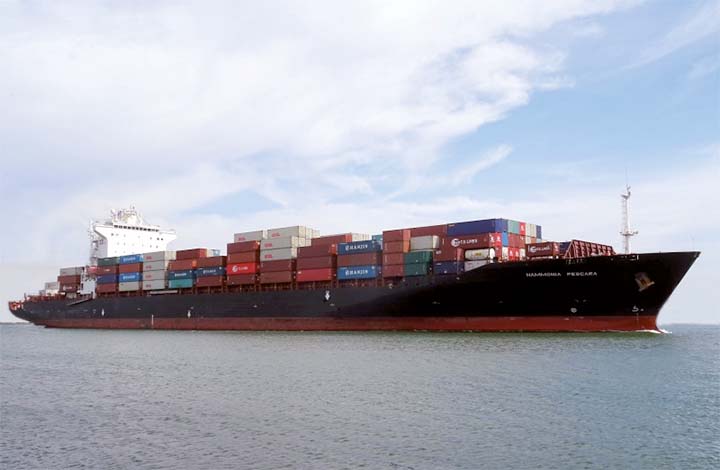
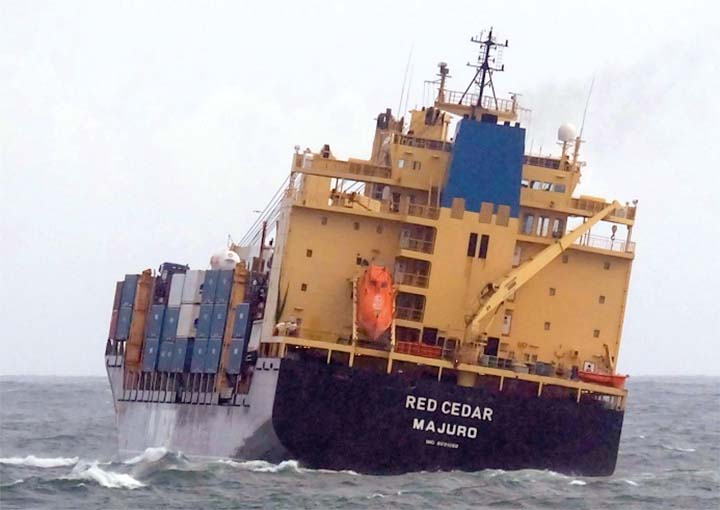




Comments
Sorry, comments are closed for this item